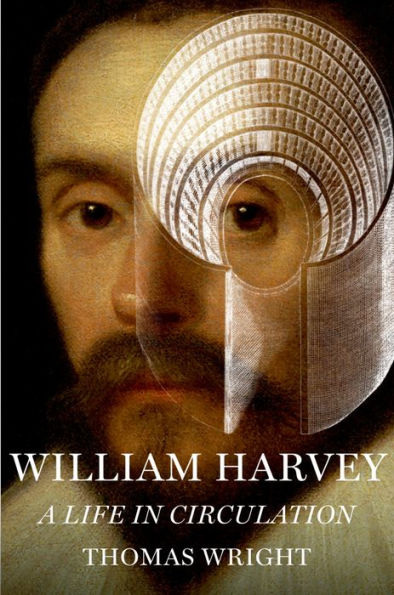5
1


eBook
$39.99
$52.99
Save 25%
Current price is $39.99, Original price is $52.99. You Save 25%.
Available on Compatible NOOK devices, the free NOOK App and in My Digital Library.
WANT A NOOK?
Explore Now
Related collections and offers
LEND ME®
See Details
39.99
In Stock
Overview
In 1628, the English physician William Harvey published his revolutionary theory of blood circulation. Offering a radical conception of the workings of the human body and the function of the heart, Harvey's theory overthrew centuries of anatomical and physiological orthodoxy and had profound consequences for the history of science. It also had an enormous impact on culture more generally, influencing economists, poets and political thinkers, for whom the theory triumphed not as empirical fact but as a remarkable philosophical idea. In the first major biographical study of Harvey in 50 years, Thomas Wright charts the meteoric rise of a yeoman's son to the elevated position of King Charles I's physician, taking the reader from farmlands of Kent to England's royal palaces, and paints a vivid portrait of an extraordinary mind formed at a fertile time in England's intellectual history. Set in late Renaissance London, the book features an illustrious cast of historical characters, from Francis Bacon and John Donne to Robert Fludd, whose corroboration of Harvey's ideas helped launch his circulation theory. After he published his discoveries, Harvey became famous throughout Europe, where he demonstrated his theory through public vivisections. Although his ideas met with vociferous opposition, they eventually triumphed and Harvey became renowned as the only man in the history of natural philosophy to live to see a revolutionary theory gain wide currency. But just as intellectual ideas could be toppled, so too could kings. When Charles I was overthrown during the Civil War of the 1640s, his loyal court physician fell also, and Harvey, an unrepentant Royalist, was banished from London under the English Republic. He died in the late 1650s, a gout-ridden, melancholy man, uncertain of his achievement. A victim of the political turmoil of the times, William Harvey was nevertheless the mainspring of vast historical changes in anatomy and physiology. Wright's biography skillfully repositions Harvey as a man who embodied the intellectual and cultural spirit of his age, and launched a revolution that would continue to run its course long after his death.

Product Details
| ISBN-13: | 9780199977017 |
|---|---|
| Publisher: | Oxford University Press |
| Publication date: | 10/01/2012 |
| Sold by: | Barnes & Noble |
| Format: | eBook |
| File size: | 5 MB |
About the Author
Thomas Wright is the author of Built of Books: How Reading Defined the Life of Oscar Wilde, and of numerous articles for publications such as the Times Literary Supplement and the Independent. He is based in Italy and Oxford, where he teaches.
Table of Contents
Part I: Raising Himself from the Ground 1. A Kentish upbringing (1578-1593): 'Half Farmer and half Gentleman' 2. Cambridge studies I (1593): 'Making low legs to a nobleman' 3. Cambridge studies II (c.1593-1599): 'Devoting himself assiduously to his studies' Essay 1. Galen, Mondino and Vesalius: A brief history of anatomy 4. Paduan studies I (1599-c.1600): 'Fair Padua, nursery of the arts' Essay 2. A dissection of sacred hearts, feeling hearts and thinking hearts 5. Paduan studies II (c.1600-1602): 'The exposition of anatomy' 6. Early years in London (c.1602-c.1610): 'Begin the world' 7. Advances (c.1610-c.1625): 'Good endeavours bring forth much good frute' Part II: Placing his Head among the Stars 8. A public lecture (late 1610s): 'Nasty (yet recompensed by admirable variety)' 9. Private research (late 1610s-1620s): 'A dog, crow, kite, raven . . . anything to anatomize' Essay 3. A short history of vivisection 10. Birth of the theory (late 1610s-1620s): 'I began to bethink my self' Essay 4. Francis Bacon, experiment and empiricism 11. Demonstration (late 1610s-1620s): 'Whereby I offer you to perceive and judge' Essay 5. The landscape of Harvey's imagination (I): Microcosm and macrocosm Essay 6. The landscape of Harvey's imagination (II): Perfect circles Essay 7. Everyday influences on Harvey's theory 12. Publication and reception (1628-1650s): '?'Twas beleeved . . . he was crack-brained' 13. Dissemination and defence (1628-1636): 'He is a circulator!' Essay 8. Descartes' clockwork universe 14. Civil War years (the 1640s): 'Anabaptists, fanatics, robbers, and murderers' 15. Last years (the 1650s): 'Shitt-breeches'From the B&N Reads Blog
Page 1 of
